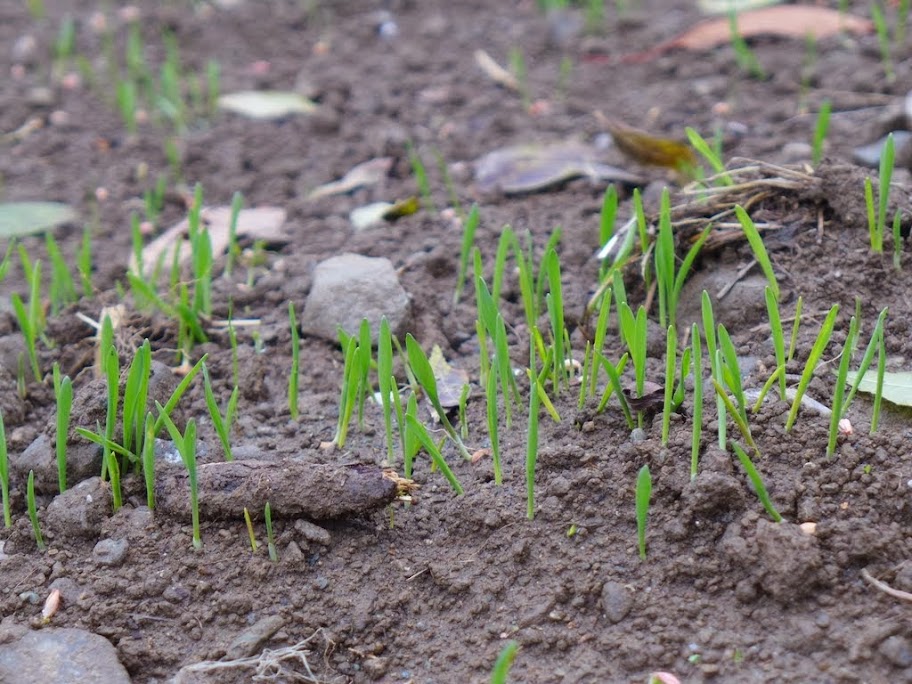Hi
I’m an Italian homebrewer and after experimenting brewing and DIY and automation of my equipments in different direction I have started a new project that I would like to share
The idea is not new…producing a batch of beer from A to Z from the ground to the glass. I have alredy an hop garden and late autumn this year I have planted a small ground with 2 row barley that now is growing.
What I would like to share in order to get your comment and support is my idea of micro malt house: a small all in one drum malting system that could produce 5-6 kg of base malt.
I would like to perform steeping, germination and kilning in one single box with a good level of automation (via arduino microcontroller that I'’ using successfully for brewing and fermentation)
Here is the cad design of the structure
One square box with a rotating drum inside and a removable cover, a fan heater from one side and 2 fans on the top in order to create a heating flow. Two solenoid valve for water inlet and outlet and a gear motor for drum rotation.
The drum should be removable in order to load easily and clean the box
I’m a little bit warried about the max temperature I can achieve with this single box during kilning phase since all the component are not insulated like in a oven but I think that for base malt should be enough
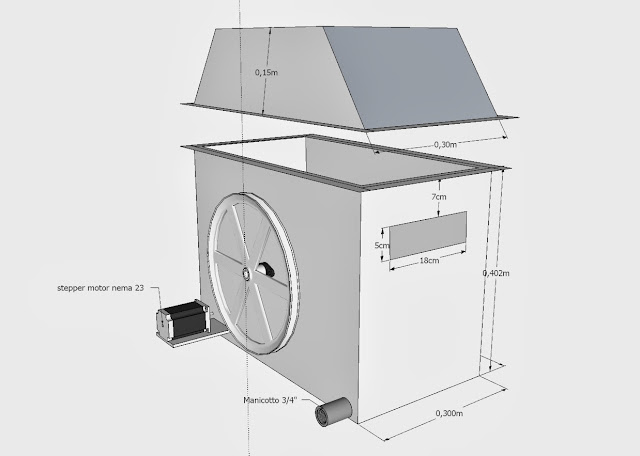
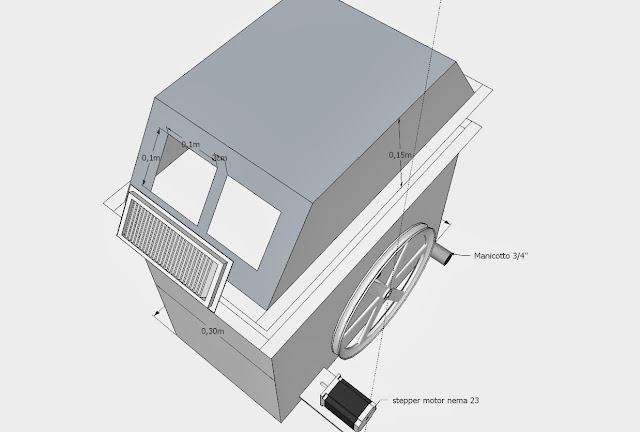
The drum has been refurbished from a top loading washing machine
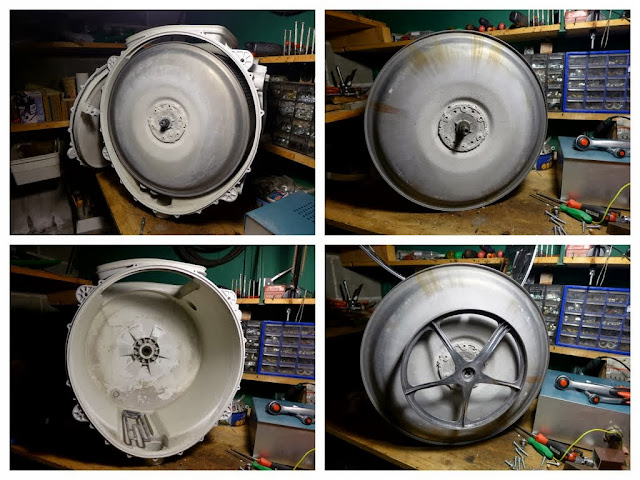
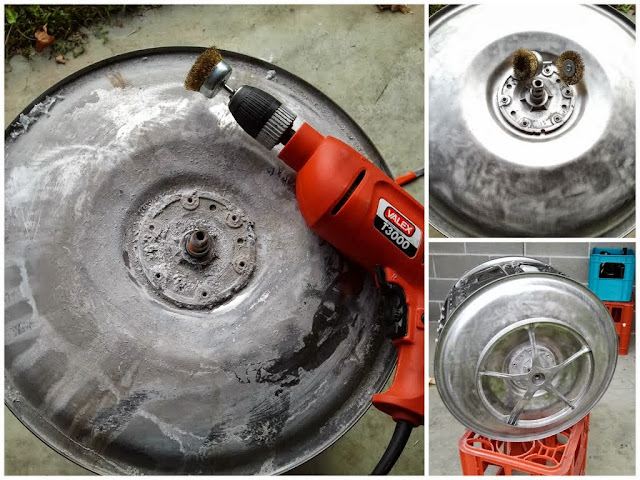
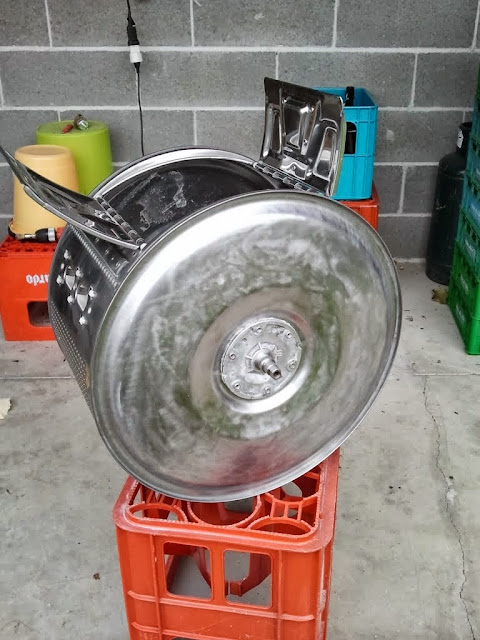
here is the fan with the 2Kw heating element
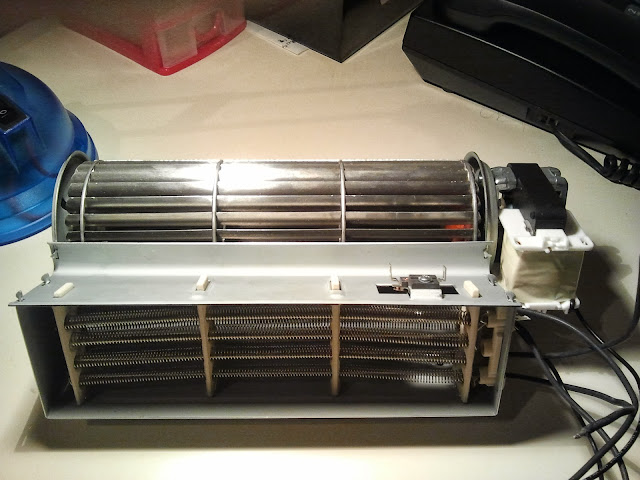
and the two way 12V solenoid valve and the level switch
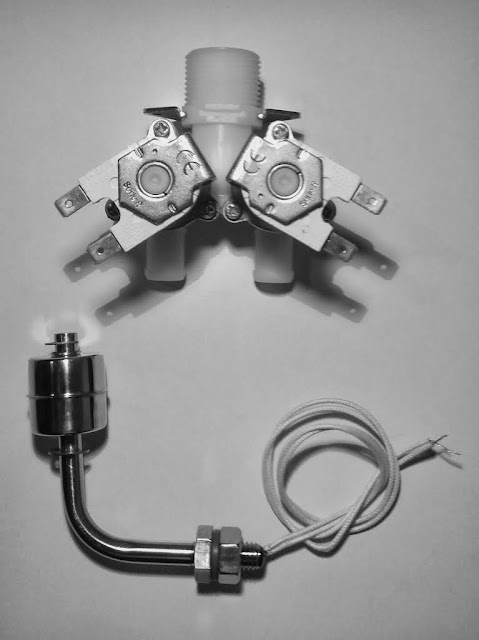
about the motor I would like to use a stepper motor that I easier to control in term of rotation and steps but I don’t know if the torque is enough
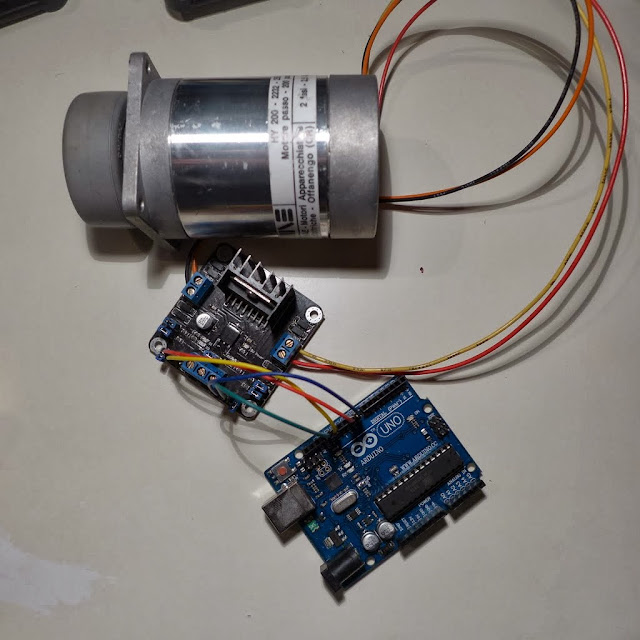
I have provided the design and the specification to a local company specialized in stainless steel precision lase cut and that is the result for the mechanical part and structure
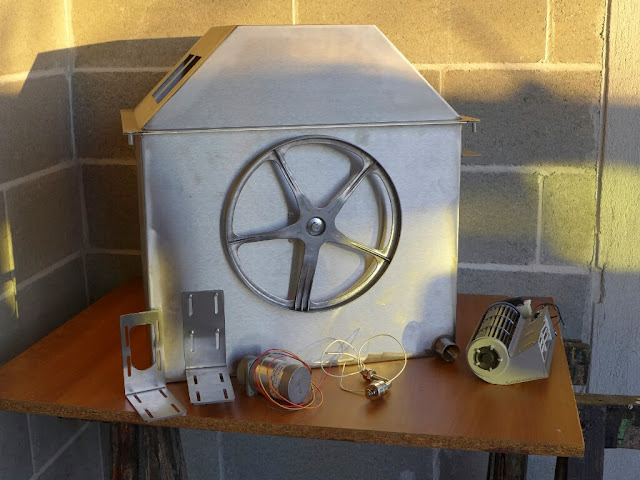
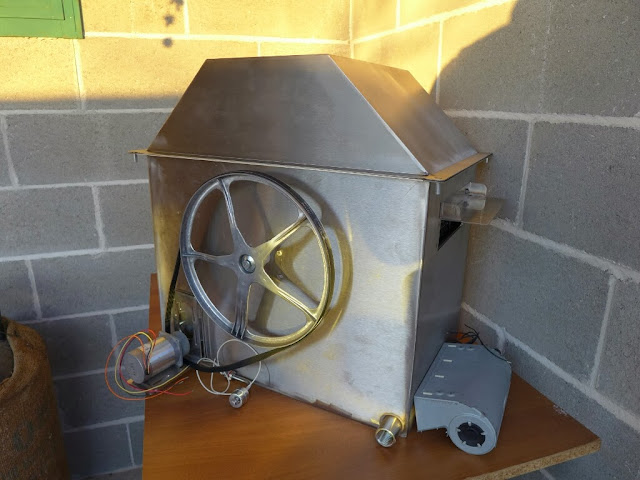
https://lh6.googleusercontent.com/-18zV1DG9W8s/UugpKR_4_LI/AAAAAAAACbQ/4RDOpQE6toU/s640/P1020973.JPG
https://lh6.googleusercontent.com/-LVG3Tjf3cDI/UuQ252xmsWI/AAAAAAAACZ0/jhdkHlmy4Ko/s640/P1020997.jpg
the drum can be completely and easily removed
https://lh5.googleusercontent.com/-v8NW6eq9Vwo/UuQ21j2OPnI/AAAAAAAACZs/LyapckifXhQ/s640/P1020999.jpg
the motor flange can be regulated in order to stretch the belt
https://lh3.googleusercontent.com/-dkk64CLQqpw/UugpPfUliRI/AAAAAAAACbw/P4njHQBEtDs/s640/P1020977.JPG
the hot air inlet an outlet
https://lh5.googleusercontent.com/-d3SuCxsCu-w/UugpTi1y6OI/AAAAAAAACcY/Peg_t9GUjxM/s640/P1020982.JPG
https://lh5.googleusercontent.com/-gbK61Y9sCE8/UugpWp-uawI/AAAAAAAACcw/1MwRSw3iLE8/s640/P1020985.JPG
water port to be connected to the solenoid valve
https://lh5.googleusercontent.com/-i0yAxErWfGI/UugpSkdCHUI/AAAAAAAACcQ/R1n8O15AYgg/s640/P1020981.JPG
Teflon shaft support
https://lh6.googleusercontent.com/-wZJZxkK0B34/UugphNwh7JI/AAAAAAAACd4/LwLOE94KKI8/s640/P1020994.JPG
shaft adapter
https://lh6.googleusercontent.com/-DyyIH7Y7ZnI/UugpfF1tQMI/AAAAAAAACdo/29KmBprihCw/s640/P1020992.JPG
air fin
https://lh5.googleusercontent.com/-MqmN9K4NCqw/UugpOTJ_3LI/AAAAAAAACbo/Rvj5Y-aP4zY/s640/P1020976.JPG
now I’m trying to design a workflow in term of steps and action on the motor/valve/fun/heater in order to start to define the skeleton of the software program
any suggestion and comment is appreciated
Davide
I’m an Italian homebrewer and after experimenting brewing and DIY and automation of my equipments in different direction I have started a new project that I would like to share
The idea is not new…producing a batch of beer from A to Z from the ground to the glass. I have alredy an hop garden and late autumn this year I have planted a small ground with 2 row barley that now is growing.
What I would like to share in order to get your comment and support is my idea of micro malt house: a small all in one drum malting system that could produce 5-6 kg of base malt.
I would like to perform steeping, germination and kilning in one single box with a good level of automation (via arduino microcontroller that I'’ using successfully for brewing and fermentation)
Here is the cad design of the structure
One square box with a rotating drum inside and a removable cover, a fan heater from one side and 2 fans on the top in order to create a heating flow. Two solenoid valve for water inlet and outlet and a gear motor for drum rotation.
The drum should be removable in order to load easily and clean the box
I’m a little bit warried about the max temperature I can achieve with this single box during kilning phase since all the component are not insulated like in a oven but I think that for base malt should be enough


The drum has been refurbished from a top loading washing machine



here is the fan with the 2Kw heating element

and the two way 12V solenoid valve and the level switch

about the motor I would like to use a stepper motor that I easier to control in term of rotation and steps but I don’t know if the torque is enough

I have provided the design and the specification to a local company specialized in stainless steel precision lase cut and that is the result for the mechanical part and structure


https://lh6.googleusercontent.com/-18zV1DG9W8s/UugpKR_4_LI/AAAAAAAACbQ/4RDOpQE6toU/s640/P1020973.JPG
https://lh6.googleusercontent.com/-LVG3Tjf3cDI/UuQ252xmsWI/AAAAAAAACZ0/jhdkHlmy4Ko/s640/P1020997.jpg
the drum can be completely and easily removed
https://lh5.googleusercontent.com/-v8NW6eq9Vwo/UuQ21j2OPnI/AAAAAAAACZs/LyapckifXhQ/s640/P1020999.jpg
the motor flange can be regulated in order to stretch the belt
https://lh3.googleusercontent.com/-dkk64CLQqpw/UugpPfUliRI/AAAAAAAACbw/P4njHQBEtDs/s640/P1020977.JPG
the hot air inlet an outlet
https://lh5.googleusercontent.com/-d3SuCxsCu-w/UugpTi1y6OI/AAAAAAAACcY/Peg_t9GUjxM/s640/P1020982.JPG
https://lh5.googleusercontent.com/-gbK61Y9sCE8/UugpWp-uawI/AAAAAAAACcw/1MwRSw3iLE8/s640/P1020985.JPG
water port to be connected to the solenoid valve
https://lh5.googleusercontent.com/-i0yAxErWfGI/UugpSkdCHUI/AAAAAAAACcQ/R1n8O15AYgg/s640/P1020981.JPG
Teflon shaft support
https://lh6.googleusercontent.com/-wZJZxkK0B34/UugphNwh7JI/AAAAAAAACd4/LwLOE94KKI8/s640/P1020994.JPG
shaft adapter
https://lh6.googleusercontent.com/-DyyIH7Y7ZnI/UugpfF1tQMI/AAAAAAAACdo/29KmBprihCw/s640/P1020992.JPG
air fin
https://lh5.googleusercontent.com/-MqmN9K4NCqw/UugpOTJ_3LI/AAAAAAAACbo/Rvj5Y-aP4zY/s640/P1020976.JPG
now I’m trying to design a workflow in term of steps and action on the motor/valve/fun/heater in order to start to define the skeleton of the software program
any suggestion and comment is appreciated
Davide





